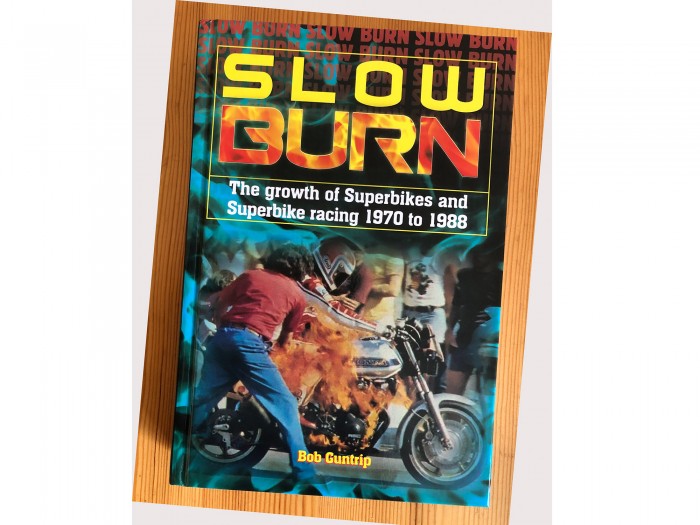In 1969 Giacomo Agostini and the three-cylinder MV won the first ten rounds of the 500cc world championship, trailed, a long way behind, by a collection of uncompetitive bikes that included those ageing British singles, the Manx Norton and the Matchless G50. World championship racing had become a boring parade.
Six months later, the 1970 Daytona 200 put the fire back into racing. Factories were launching road bikes that were bigger, more complex and more glamorous than most grand prix motorcycles, and they were looking for a race to showcase them. The 3.81-mile Florida circuit, with its oddball blend of towering bankings built for NASCAR Fords and Chevvies, and mundane infield curves, was that place.
Overnight, there was competition, uncertainty, sensation, drama and unexpected glory back on the racetrack. The new 750cc class might have been based on tuned road bikes, but it brought together four-cylinder machines (Honda CR750), triples (BSA and Triumph), a V-twin (Harley-Davidson XR750), and two-stroke triples (500cc Kawasaki H1-R) and twins (Suzuki TR500 and 350 Yamaha). And top riders flocked there - Paul Smart, Mike Hailwood, Gary Nixon, Cal Rayborn, Ralph Bryans, Kel Carruthers, Gene Romero among them.
Fifty years on, a new book, Slow Burn: The Growth of Superbikes and Superbike Racing 1970-1988, by Bob Guntrip, reminds us of the impact of that pioneering race. Romero, on a Trident honed by Doug Hele’s famed experimental department at Meriden, qualified fastest by winding round the bankings (the infield was not used for qualifying) at 157.34mph, with a top speed of 165.44mph. This was way above what 500cc grand prix bikes of the time would achieve, Ago’s lone MV excepted.
The race turned into a technical train wreck. It wasn’t that the engineers were incompetent, but so many of the designs on the grid were new to racing. Three factory Hondas went out with camchain failures, Hailwood with a broken valve on his BSA, Carruthers with crankshaft failure, Rayborn with a seized piston.
Dick Mann was also having camshaft-tensioner problems with his Honda, but in his years of racing for a fistful of dollars in the American flat-track trade, he had learnt now to nurse an ailing bike to the finish. While others broke or crashed at Daytona, Mann let the race come to him, and, with just a pint of oil left in his engine, beat Romero by ten seconds.
]
Daytona continued to flagship F750 racing in the early seventies. 1971 brought a BSA Rocket 3 win - that guy Mann again - while 1972 saw the arrival of the first full two-stroke 750s from Suzuki and Kawasaki. While Ago cruised to another unchallenged 500cc world title that season, Daytona erupted with rumours of 100bhp outputs from these wild new strokers. Art Baumann blew through the speed traps at 171.75mph on his Suzuki - a jaw-dropping number on a road-race bike half a century ago.
The designers of these bikes were operating in unknown territories. In practice the strokes were shredding tyres at a frightening rate, and in the race all the factory two-stroke triples disappeared, with an assortment of big-end, magneto, clutch and tyre troubles. They had too much motor for the time, and race chiefs hadn’t yet learned how to harness it.
Slow Burn covers superbike racing at the TT, Bol d’Or and Suzuka 8 Hours, eighties’ rivalries involving Freddie Spencer, Eddie Lawson, Wayne Rainey and Kevin Schwantz, the march of technology from carburation to fuel injection and steel to alloy frames, up to the late eighties when the World Superbike Championship was launched.
My first reaction to this book was - my god, what an epic of research, through nearly two decades of race results, names, specifications, politics, claims, evolutions. Bob Guntrip is a hardcore aficionado of racing, who rode to his first event at Mallory Park on an 80cc Suzuki K10 when he was 16 in 1967. To produce the book he checked every issue of every magazine of interest, used the extensive VMCC library in Burton upon Trent for long periods, and checked American titles online.
He also interviewed personalities such as Steve McLaughlin, a key figure of US racing in the 1970s and an architect of the original World Superbike Championship, Cook Neilson, the great Cycle magazine editor and rider of the California Hot Rod Ducati, Paul Smart, John Cooper and Mick Grant.
The result: a great read to pass your lockdown weeks away.
Slow Burn (£25) is available from veloce.co.uk. Bob Guntrip is also the author of Racing Line, the story of British short-circuit racing in the sixties, available from the same publisher.


